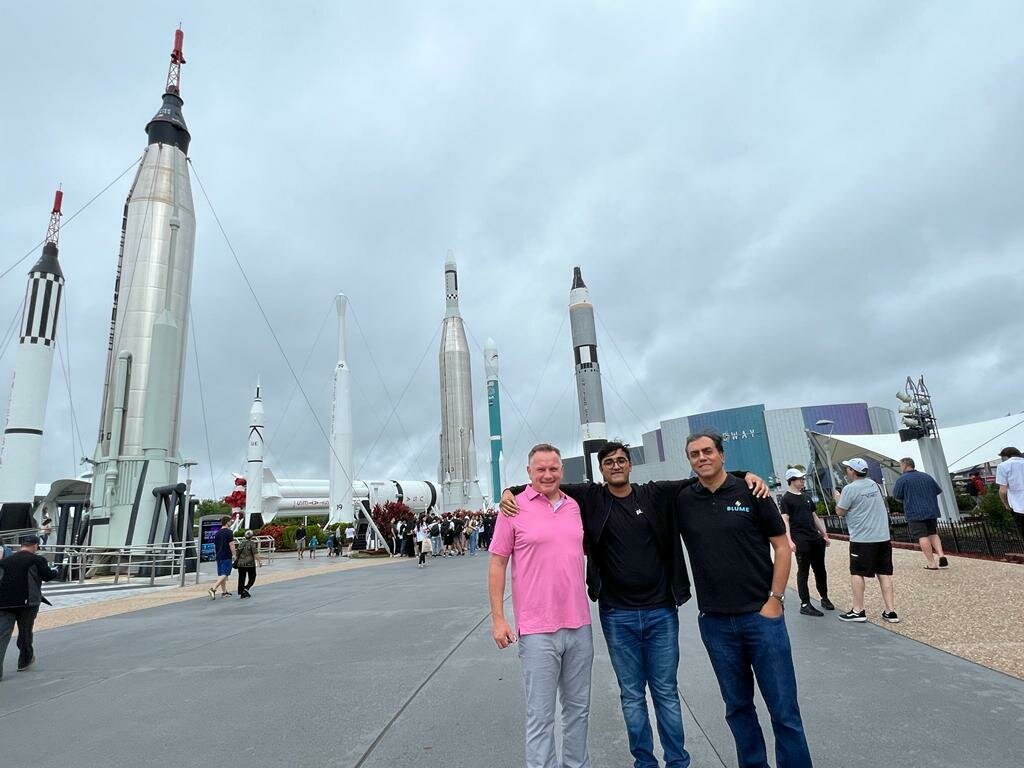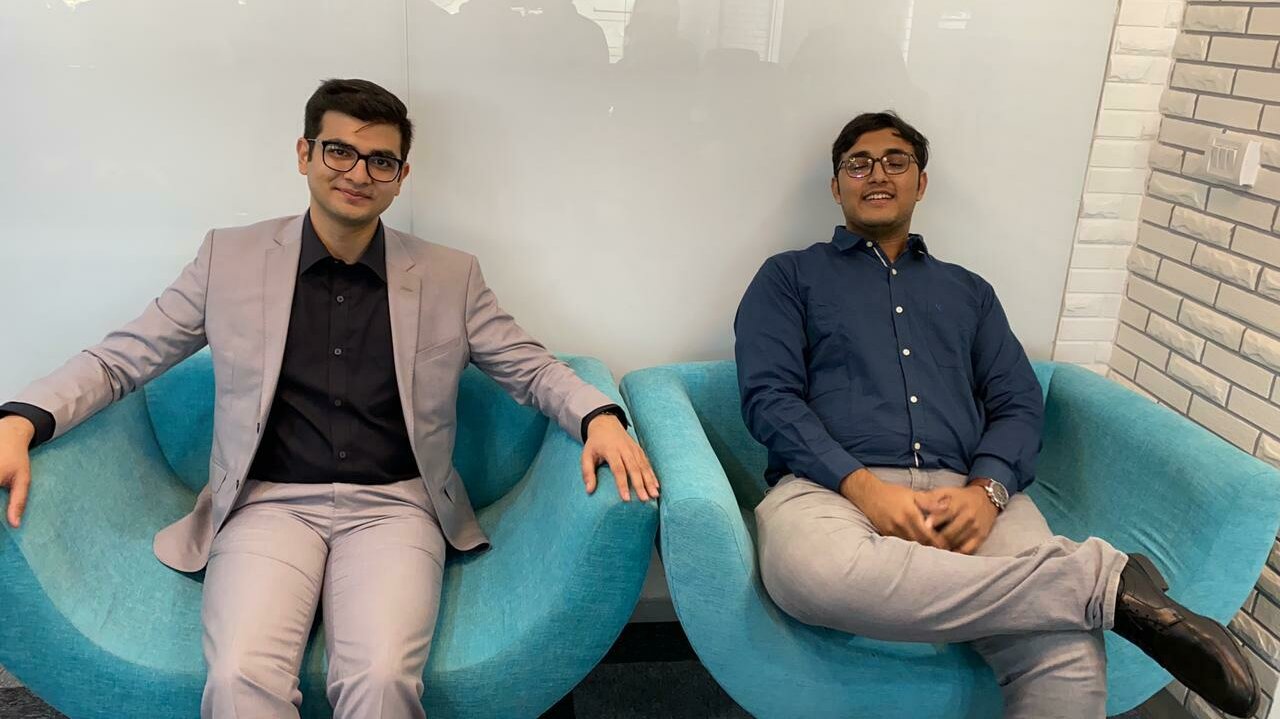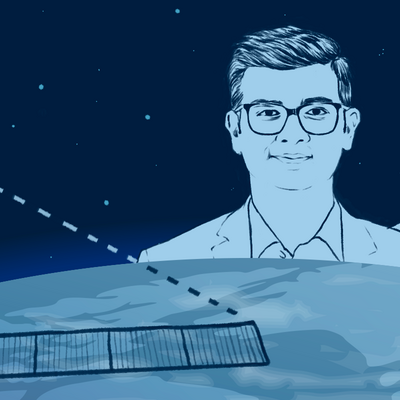Pixxel Crosses The First Frontier In Building A Health Monitor For Earth, And The Space Odyssey Has Just About Begun
- Published
- Reading Time
- 4 minutes
On April 1st 2022, two 24 year olds, who started their journey of building satellites at the age of 19, launched India’s first private commercial satellite through SpaceX’s Transporter 4 mission from Cape Canaveral. This is the first of their constellation of hyperspectral imaging satellites and will capture near real time data that is 50x richer than any remote sensing constellation. Pixxel TD-2 is the world’s most advanced hyperspectral imaging satellite in orbit and will be capturing images in 150+ bands of light with a spatial resolution of 10m. These images will help identify and predict invisible changes in our planet like crop infestation, natural gas leakages, melting glaciers, deforestation, among others, which to date have been unseen to most remote sensing constellations. With this launch, they are one step closer towards creating a health monitor for our Planet and enabling decisions that would make our world a better and more sustainable place.
In any other world, it would have been assumed that this is an April Fool’s day joke, but this is not any other world – This is the world of Awais Ahmed and Kshitij Khandelwal, a world where impossible is nothing. With every few generations, there are individuals who facilitate an orbital shift forward in humanity’s progress – When we met Awais and Kshitij, we could see individuals who not only had the dream and ambition to take the world forward but also ones who had the resolve and grit to stay resolutely on that path regardless of what is thrown at them.
Since Nov 2018 when Sanjay Nath, co-founder of Blume Ventures, met Awais & Kshitij at our alma mater, BITS Pilani, we had complete conviction in their ability to imagine and build things that have never been built before. Over a period of time, our conviction in the business opportunity also grew and we could see certain favourable enablers in the space ecosystem such as
i) Launch costs going down significantly due to ride sharing and small launch vehicles
ii) Ground stations as a service emerging as a commoditized offering to enable satellite companies beam down their data seamlessly
iii) Proliferation of Cubesats and miniaturization of electronics enabling sophisticated payloads in smaller satellites.
iv) The API economy and superior data infrastructure allowing low latency data pipelines consumable near real time.
With their full stack approach of building under 15 kgs satellites grounds up, along with owning the state of the art miniaturized hyperspectral payload, and a PaaS solution to drive insights from the data they owned, Pixxel was uniquely positioned at the intersection of all the market enablers that are currently benefitting them. In a lot of ways their moat is building three state of the art space companies in one, and there couldn’t have been a better time to be a part of their journey.
We had an opportunity to be a part of their journey first in Nov 2019, when they had a pre-seed round that was oversubscribed. We couldn’t make the best of that opportunity, however we were fortunate to have had the opportunity present itself again in Apr 2020 – We grabbed it with both hands! Ever since, it has been phenomenal seeing the immense progress the team at Pixxel has made in building a phenomenal team from the likes of ISRO, DRDO, Planet labs, Honeywell, to name a few. They have raised over $33M in venture capital funding from some of the best investors in the world, and signed contracts worth tens of millions of dollars for their data. Most importantly, they have achieved this straddling two continents and have built a culture that only the greatest of great companies have.
Yesterday was a watershed moment for the Indian startup ecosystem and Indian space history when Pixxel TD-2 went up in orbit and made contact in the wee hours of dawn. We believe this moment would never have been possible without the culture that Pixxel imbibed into the way they operated. In one of their earliest discussions with the board, Awais and Kshitij presented a 50 slide culture deck in which they encapsulated the principles with which they wanted to build Pixxel. Few excerpts that stuck with me ever since:
Yesterday we had the opportunity to witness the sense of ownership that culture has helped build within the team and every stakeholder – To see how emotionally invested every single individual in the room where the launch was being screened was one of the most phenomenal experiences I have ever had. There was a Pixxel of the image that Awais and Kshitij had imagined for the company they would build, etched in every individual in the room.
Countdown to the Transporter-2 take off at the Pixxel office in Bangalore
At 35, I was the third oldest guy in a room by almost a decade, and to imagine a team with a median age of less than 25, to have achieved something that has never been done before on so many counts was one of the most inspiring moments in my life. The excitement and fervor of youth in the company only reinforces our belief as investors that history relies on every new generation to write a new chapter in its books – This moment would definitely go down as one of the most pivotal chapters in the history books of the Indian startup ecosystem!
In the excitable words of our dear Bitsian friend Rahul Seth (One of the earliest cheerleaders/backers of Pixxel), “Awais and Kshitij are like the dragonslayers that we read about in mythological books as kids, who with sheer grit and perseverance would slay any obstacle that come their way in making the unimaginable possible.“
We are truly humbled, inspired and immensely grateful to have been able to be a fly on the wall and witnessed this incredible space odyssey that our friends at Pixxel have been taking us on, and are super excited about what lies ahead!







